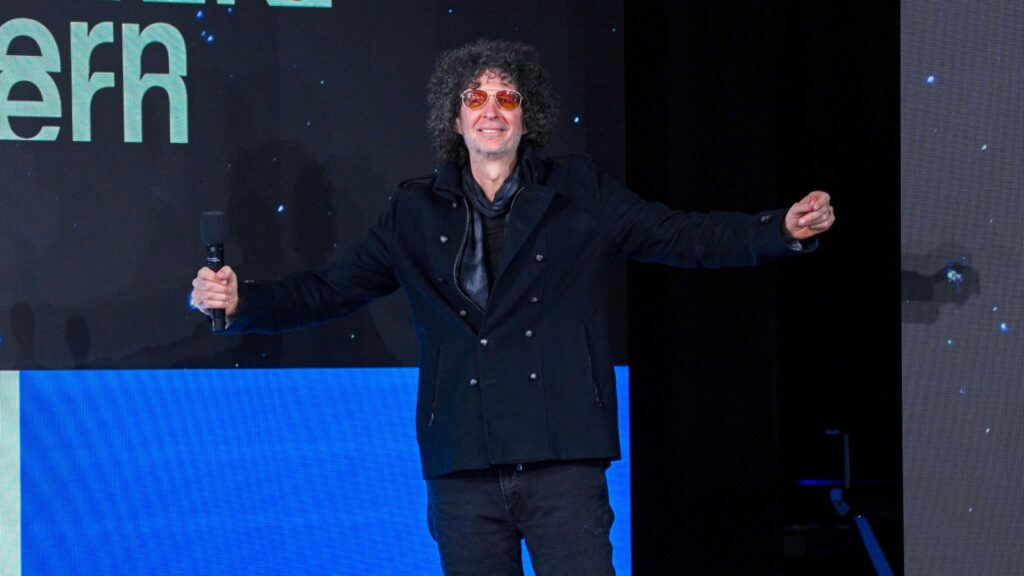‘Hades II’ Is One of the Year’s Best Games — and It’s Not Even Finished
THIS POST CONTAINS spoilers for ‘Hades’ and ‘Hades II.’
Over the last few weeks, the gaming community has been in a frenzy about Hades II. As the game trends across social media, setting Tumblr and Reddit alight with fan art and endless theorization, the conversation has become, “Should you play Hades II?” The answer is yes, with reservations.
But first, just what the hell is Hades II?
It should be a given from the title, but Hades II is the sequel to Hades, the indie action game from Supergiant Games that exploded in popularity back in 2020. Lots of indies have gained prestige over the last decade or so, but few managed to demand the level of attention as Hades, which went toe-to-toe with highly anticipated big-studio releases like The Last of Us Part II, Final Fantasy VII Remake, and Ghost of Tsushima to take home multiple Game of the Year awards. In short, it was a big deal.
Inspired by Greek mythology, the game followed Zagreus, the son of Hades, whose repeated attempts to escape the Underworld frames the narrative and gameplay. Players must make their way through four unique realms — Tartarus, Asphodel, Elysium, and the Temple of Styx — with each arena taking on a different layout and enemy formation for players to learn and adapt to, but never memorize. If you die, you start again. And again.
Created by a team of less than 20, players celebrated the title for its addictive play, engrossing visuals and sound, and for its inventive use of the roguelike genre to tell a perpetually unfurling story that rewarded endless replay. It proved that games don’t need to be big; they just need to be good. It was also sexy as fuck.
Melinoë must answer the call of the gods to save her family and the house of Hades.
Supergiant Games
The joy of Hades was in its use of accessible mechanics and a heartfelt story to drive players who would otherwise ignore a more niche, seemingly difficult genre — a feat it’s seamlessly repeated in its sequel. That’s not easy, but Supergiant capitalized on early access to foster a fandom that reached a fever pitch before the game ever even formally released. Over the two year pre-release window, the developers were able to address direct feedback and build the myth of a game, creating a buzz that would culminate with the game’s official release for PC, and later, consoles where it could reach a wider audience.
All this is to say that when the first inklings of a Hades II appeared online in late 2022, the response was electric. Now, after years of anticipation, Hades II — the first ever sequel for Supergiant Games — has finally been released into early access.
Rolling Stone had the opportunity to play Hades II in both a closed technical test and early access, and our takeaway is that it’s every bit the game fans wanted and more.

Players begin back at the Crossroads each time they fall in battle.
Supergiant Games
What is Hades II About?
Like the first game, Hades II puts you in the role of a child of Hades who, with the aid of their extended family of Olympic gods, chthonic figures, and lesser deities, must face a never-ending gauntlet to escape the realm to which they’re bound.
The original game starred Zagreus, whose fractured relationship with his father pushed him to escape the Underworld to the surface world to find his absent mother, Persephone. Throughout dozens of attempts, players learned about the interpersonal dynamics between the gods — many of whom are petty, aiding Zag against his father’s will just for yuks — as well as the rich backstories of other characters
Enter Hades II. After a seemingly happy ending, the game picks up some unspecified amount of time later and everything’s a mess (blame Greek tragedy). Players now take on the role of Melinoë, the younger sister of Zagreus and second born child of Hades and Persephone. Trained as a witch under the tutelage of Hecate, Witch of the Crossroads, Melinoë has never met her family, who were taken from her by Chronos, the Titan of Time. So, it’s once again a family affair as Hecate serves as Melinoe’s surrogate mother (much like Nyx to Zagreus in Hades) and Chronos is, well, the granddaddy of them all, father to Hades and paternal grandfather to Melinoë and Zagreus. With that, Melinoë must take off on her own personal odyssey to find her family and end Chronos’ assault on Olympus through good old-fashioned parricide.

Hades himself with wife Persephone, son Zagreus, and newborn daughter, Melinoë.
Supergiant Games
The framework here is very similar to Hades on the surface, with Melinoë forced to traverse multiple regions through a roguelike mechanic that forces her back to the start every time she falls. But unlike the first game, where players are ascending to the surface, the daughter of Hades is on a quest to descend back down to Tartarus to reclaim her familial dominion. While this may seem familiar, rest assured that Hades II is much larger than it appears at first blush.
In our combined playtime of over 70 hours across the technical test and early access, it’s clear that the world of Hades II is exponentially larger than the first game, with easily double the number of regions to explore as pathways lead not just down to the depth of the Underworld, but outward toward Olympus itself.

The sequel features a greater scope of environments and regions to explore.
Supergiant Games
How Does Hades II Play?
With Hades II, the designers have found a way to completely reinvent the original’s gameplay without changing the fundamental structure loop or instincts returning players may have picked up — while remaining accessible to newcomers. But there are some major differences.
It begins with the protagonist herself. Zagreus, for all intents and purposes, was a jock. Melinoë, conversely, is much more studious, relentlessly disciplined, and overflowing with her own charm. Trained as a witch, she utilizes magic even with her weaponry in combat. Whereas Zagreus played much more like a brawler with swords, bows, and gauntlets to pummel his foes into submission, Melinoë has access not only to her own, completely new set of infernal arms — but the magic coursing through her Orphic bones.
Melinoë’s weaponry is indicative of a shift in the gameplay from the first game, which focused on the trifecta of a primary attack, an alt-attack, and a cast that can all be modified by various boons, powerful abilities and upgrades granted by the gods. There are currently five weapons for players to unlock in the early access version of the game — including the Witch’s Staff which has well-rounded attacks for both close- and long-range, and the Sister Blades for close-quarter combat — with more likely in the final release.

Boss battles require players to learn precise patterns to elude death.
Supergiant Games
What’s New in Hades II?
In Hades II, the choice of arms still determines the types of attacks available to players, but changes to this standard skill set also change the way the game is played. Like in Hades Melinoë has both a primary and special attack that fit most occasions, but it’s the new magic-cast ability that reframes the moment-to-moment gameplay. With the press of a button, players can now drop a circular cast on the ground that holds enemies in place, creating an area of effect that can cause damage or, more importantly, slow down the chaos on screen for players to reorient themselves and focus on the enemy clusters discriminately. All three attack types can also be charged, pulling from a finite magic meter, to unleash more powerful attacks. Previously, these kinds of abilities could be attributed to specific weapons through boons, but now they’re always available.
The updates from the first game appear small at first but open up the gameplay for completely new strategies that require longtime players to rethink their well-worn approach, while making an already accessible game even easier to pick up on a first playthrough.
Boons, too, have seen an overhaul. Many of the fan-favorite gods return from the first game to aid Melinoë, including Zeus, Poseidon, Aphrodite, Artemis, and Hermes. In both games, upgrades are selected by clearing a room and calling upon the designated god who offers their boon, which opens up a dialogue tree to select one of three upgrades to add to your build. As players traverse through new realms they will have to choose specific paths leading to their desired boons, fighting their way through the world to selectively craft the type of character they want to play. Want to do heavy damage? Align with Poseidon to empower your weapons and magic to use the cutting power of the seas, throwing enemies into each other and bouncing off surfaces. Playing it safe? Call on Aphrodite to weaken enemy attacks against you for a fighting chance. Want to burn it all to rubble? The newly included Hestina may be the Goddess for you.

The game’s art, by Jen Zee, imbues the gods with a sense of ethereal majesty and humanity.
Supergiant Games
Through various new mechanics there are now more ways to creatively combine boons than ever before. Whereas before, players who had multiple boons from two gods could unite them to create powerful duo boons, Hades II introduces fusion. Now — by tracing the elemental aspects of different boons — players can mix and match more abilities from more gods only to receive a big pay-off late in the run with a fusion technique for consistently following an elemental type.
It may sound confusing, but the success of Hades is how clearly it spells out what the boons do and how to manipulate them, while also creating a playground for trial and error.
But of course, with many of the gods preoccupied with the siege of Olympus, there are new deities who offer their aid — including Apollo, Hephaestus, Hera, Hestia, and even the titaness Selene, who imbues players with the power of the moon for special abilities.

The cast extends even deeper into the depths of Greek mythology than before.
Supergiant Games
Should You Play Hades II?
Given all the lavish praise for Hades and now its sequel, it seems like a no-brainer, right?
It is, but the real question is whether you should play Hades II right now. As an early access game, Supergiant has afforded players the opportunity to essentially take on the role of play testers. In its current form, Hades II isn’t a final product, which means many of the characters don’t feature their finished artwork (or any imagery at all). Their dialogue options, although seemingly endless, are also incomplete. Granted, there are a lot. Within 70 hours, we still haven’t even reached the bulk of where the individual character’s stories and personal bonds can go, but there is a feeling that much of this will be moot given that the game’s true ending is not available to players — even those who max out their relationships with various characters.
To play Hades II in early access, players must also purchase the full game. Does that mean your save data — potentially hundreds of hours of progress — will transfer to the final release? According to the in-game developer’s notes, yes. Which is great! But bear in mind that the early access window is going to extend throughout the remainder of the year, meaning that the final product won’t be seen for some months.

Time is the ultimate enemy as Chronos awaits players in the depths of the Underworld.
Supergiant Games
That may not sound like an issue, but remember that this isn’t a complete game. You may play most of the story without ever even seeing the faces of certain characters, or dialogue and narrative beats may change. There’s simply no way to know what will change or remain between the current version and the retail release.
That being said, what’s being presented here in the current version of Hades II is simply astounding. With easily double the content of the original game, the early access build of Hades II isn’t a rickety work in progress — frankly, it plays better and delivers more than many games do in their final form.
It’s really a matter of preference. Do you join the community now, participating in a grand experiment to help mold Hades II into the game it will eventually become? Or do you wait until the game’s official release and experience the full, polished effect all at once?
If you’re a console player, you’re shit out of luck. The choice has been made for you, as early access is limited to PC players, with the final game likely shipping on consoles alongside or shortly after the final PC release. The first Hades hit the Nintendo Switch a few months after its PC debut, with other consoles following thereafter, but given the popularity of the game and the role consoles played in its success, the wait for Hades II on PlayStation and Xbox (or even the rumored Nintendo Switch 2) shouldn’t be too long.
Rest assured that, whatever choice you make, you need to play Hades II at some point. A masterful feast of video game artistry, from design to function, it’s sure to be a contender for next year’s best game. And why not? It’s already one of this year’s best games, and it’s not even finished.





